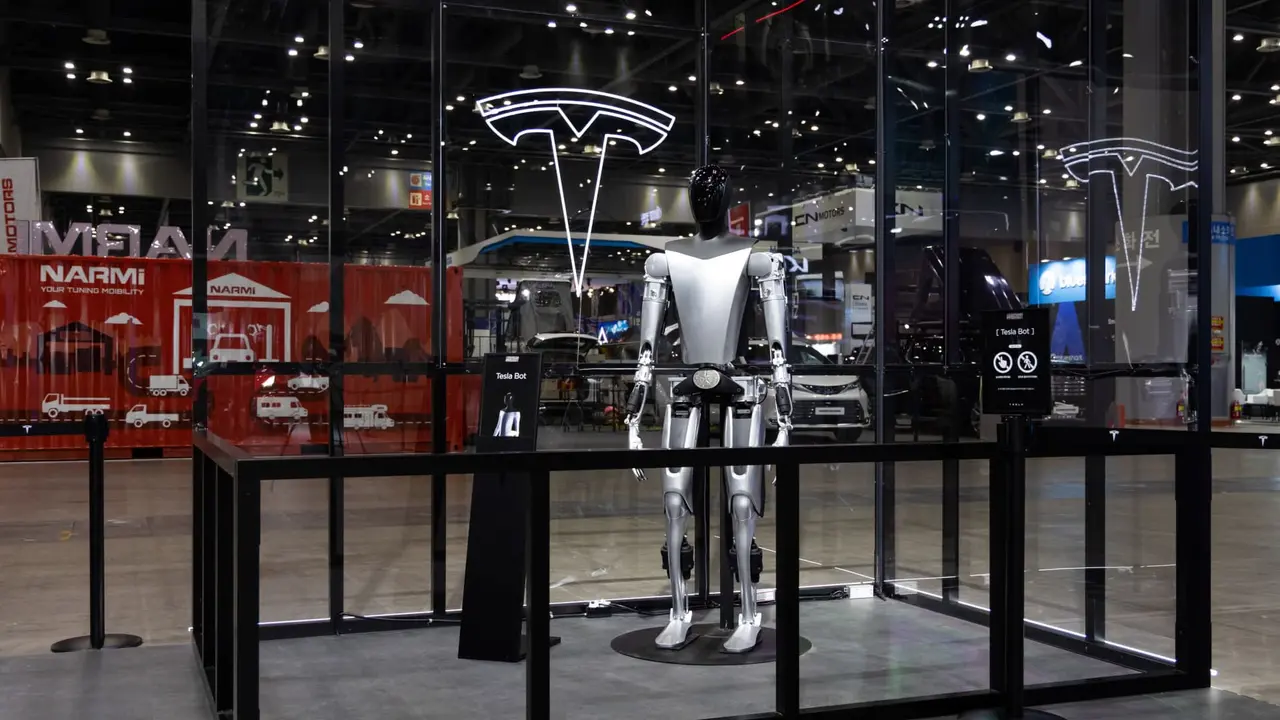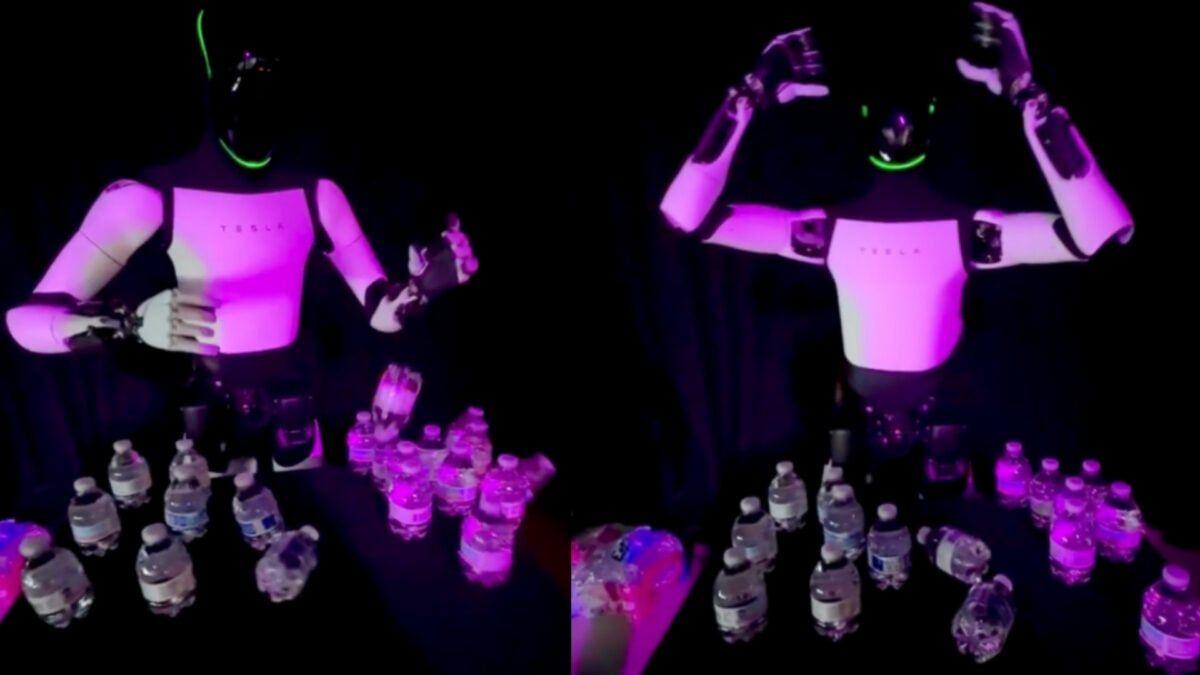UBTECH's Walker S1 Humanoid Robot Gains Edge in Real-World Applications
2 Sources
2 Sources
[1]
Is China's Walker S1 a Step Ahead of Tesla's Optimus?
At first glance, China's UBTECH Walker S1 humanoid won't impress you as much as Figure AI, Tesla's Optimus or Boston Dynamics' Atlas. The demo videos published on their YouTube channel reveal that the Walker S1 lacks the agility of its more high-profile counterparts. Perhaps its understated design and less dramatic capabilities contribute to its lower visibility in popular media. But for UBTECH, that isn't the focus of the Walker series of humanoid robots. They just want to move them into the real world, pronto. UBTECH is partnering with leading automotive manufacturers to integrate the Walker S1 into their manufacturing lines. Interestingly, BYD, Tesla's biggest competitor in China, has already integrated the Walker S1 into its assembly line and has placed an order for five hundred more robots in the future. As reported by the South China Morning Post, the humanoid works along with logistic vehicles and intelligent manufacturing management systems to automate large-scale operations. Not just BYD, UBTECH's Walker S1 is integrated into EV maker NIO's advanced manufacturing factory base F2 and has been successfully performing several quality and inspection tests on a production level. UBTECH claims it was a first-of-its-kind deployment on an assembly line, wherein a humanoid robot collaborated with humans to perform automotive assembly and quality inspections. Zeekr, another Chinese EV giant, performed several tests using Walker S Lite. The robot successfully demonstrated 'parcel tote handling' capabilities in its three weeks of training. The Walker S lite was also used in several scenarios to perform quality checks and inspections in one of FAW-Volkswagen's production lines. Meanwhile, Walker S, another UBTECH robot deployed at Chinese automobile firm Dongfeng Liuzhou Moto, successfully conducted inspections, filled fluid and attached emblems to the car's body. Tesla's Optimus humanoids have demonstrated impressive capabilities, albeit in an internal and simulated environment. Boston Dynamics' humanoid, Atlas, is currently only being tested by its parent company Hyundai. Earlier this year, Figure announced a partnership with BMW and Sanctuary AI, with automotive part supplier Magna. Despite that, as of August, there are no Figure Humanoid robots deployed at BMW's facilities yet, and we haven't seen any further development since Sanctuary AI's announcement of a partnership with Magna. Most of these humanoid robots are being thoroughly tested and refined inside a simulated environment before they are released in real-world settings. This is not to imply that the Walker S1 is incapable. It does possess a reasonable level of dextrousness and stable walking capabilities. It stands tall at 172 cm and weighs 76 kg, with a payload capacity of 15 kg. The humanoid also has a 360-degree field of view and can function in a generalised environment. A few months ago, UBTECH also partnered with Chinese internet search company Baidu to integrate a large language model into its system. Therefore, theoretically, Walker S1 is on par with any bipedal humanoid robot existing today. Is it feasible to jump the gun and start integrating humanoids directly into environments? Yes and no. To begin with, the current applications of the Walker S1 do not create any direct value for the manufacturing chain. In a demonstration at NIO's production line, the quality inspection capabilities seem impressive, but they happen at quite a slow pace. Traditional, fixed-support robotic arms are already achieving this feat with high accuracy and speed. In comparison, bipedal robots, at their current abilities, seem overkill and inefficient. Nevertheless, early integration of these robots in the real world can improve UBTECH's chances of refining the humanoid to match the performance of other industry-leading robots. UBTECH may have an advantage in generating training data in real-world situations, which often accounts for all the challenges and limitations which otherwise may be missing in simulated and internal environments. Given the rate at which AI is progressing today, how long will it take for these humanoids to overcome some of the significant challenges in traditional robotic systems? It likely won't be long, as we've ascertained through several examples in recent years. It's also about market advantage. UBTECH wants to seal the deal with the biggest names in the Chinese automotive industry. Moreover, early-stage partnerships with massive EV giants like BYD can lead to collaborative efforts to develop the capabilities of the humanoid robot. This way, advancements for the Walker S1 can align towards both external expectations and UBTECH's internal vision of the humanoid. Moreover, China is also facing an unprecedented labour shortage. It is estimated that China will lose 30 million workers in major manufacturing industries by 2025. Efforts in developing humanoid robots, especially if a company has already secured customers, are likely to yield exponentially higher odds of success. That said, the Walker S1 is a step ahead of Tesla's Optimus, as it is already operating in a real-world, external environment. Will it also leap ahead in terms of capabilities, refinement, and intelligence? That remains to be seen and will largely depend on the effectiveness of UBTECH's strategy moving forward.
[2]
UBTECH's Walker S1 Leaves Tesla's Optimus Feeling a Little Shy and Insecure
UBTECH's focus with the Walker S1 humanoid is to skip lengthy stages of concept development, testing, and prototyping and start using it in real, industrial environments. At first glance, China's UBTECH Walker S1 humanoid won't impress you as much as Figure AI, Tesla's Optimus or Boston Dynamics' Atlas. The demo videos published on their YouTube channel reveal that the Walker S1 lacks the agility of its more high-profile counterparts. Perhaps its understated design and less dramatic capabilities contribute to its lower visibility in popular media. But for UBTECH, that isn't the focus of the Walker series of humanoid robots. They just want to move them into the real world, pronto. UBTECH is partnering with leading automotive manufacturers to integrate the Walker S1 into their manufacturing lines. Interestingly, BYD, Tesla's biggest competitor in China, has already integrated the Walker S1 into its assembly line and has placed an order for five hundred more robots in the future. As reported by the South China Morning Post, the humanoid works along with logistic vehicles and intelligent manufacturing management systems to automate large-scale operations. Not just BYD, UBTECH's Walker S1 is integrated into EV maker NIO's advanced manufacturing factory base F2 and has been successfully performing several quality and inspection tests on a production level. UBTECH claims it was a first-of-its-kind deployment on an assembly line, wherein a humanoid robot collaborated with humans to perform automotive assembly and quality inspections. Zeekr, another Chinese EV giant, performed several tests using Walker S Lite. The robot successfully demonstrated 'parcel tote handling' capabilities in its three weeks of training. The Walker S lite was also used in several scenarios to perform quality checks and inspections in one of FAW-Volkswagen's production lines. Meanwhile, Walker S, another UBTECH robot deployed at Chinese automobile firm Dongfeng Liuzhou Moto, successfully conducted inspections, filled fluid and attached emblems to the car's body. Tesla's Optimus humanoids have demonstrated impressive capabilities, albeit in an internal and simulated environment. Boston Dynamics' humanoid, Atlas, is currently only being tested by its parent company Hyundai. Earlier this year, Figure announced a partnership with BMW and Sanctuary AI, with automotive part supplier Magna. Despite that, as of August, there are no Figure Humanoid robots deployed at BMW's facilities yet, and we haven't seen any further development since Sanctuary AI's announcement of a partnership with Magna. Most of these humanoid robots are being thoroughly tested and refined inside a simulated environment before they are released in real-world settings. This is not to imply that the Walker S1 is incapable. It does possess a reasonable level of dextrousness and stable walking capabilities. It stands tall at 172 cm and weighs 76 kg, with a payload capacity of 15 kg. The humanoid also has a 360-degree field of view and can function in a generalised environment. A few months ago, UBTECH also partnered with Chinese internet search company Baidu to integrate a large language model into its system. Therefore, theoretically, Walker S1 is on par with any bipedal humanoid robot existing today. Is it feasible to jump the gun and start integrating humanoids directly into environments? Yes and no. To begin with, the current applications of the Walker S1 do not create any direct value for the manufacturing chain. In a demonstration at NIO's production line, the quality inspection capabilities seem impressive, but they happen at quite a slow pace. Traditional, fixed-support robotic arms are already achieving this feat with high accuracy and speed. In comparison, bipedal robots, at their current abilities, seem overkill and inefficient. Nevertheless, early integration of these robots in the real world can improve UBTECH's chances of refining the humanoid to match the performance of other industry-leading robots. UBTECH may have an advantage in generating training data in real-world situations, which often accounts for all the challenges and limitations which otherwise may be missing in simulated and internal environments. Given the rate at which AI is progressing today, how long will it take for these humanoids to overcome some of the significant challenges in traditional robotic systems? It likely won't be long, as we've ascertained through several examples in recent years. It's also about market advantage. UBTECH wants to seal the deal with the biggest names in the Chinese automotive industry. Moreover, early-stage partnerships with massive EV giants like BYD can lead to collaborative efforts to develop the capabilities of the humanoid robot. This way, advancements for the Walker S1 can align towards both external expectations and UBTECH's internal vision of the humanoid. Moreover, China is also facing an unprecedented labour shortage. It is estimated that China will lose 30 million workers in major manufacturing industries by 2025. Efforts in developing humanoid robots, especially if a company has already secured customers, are likely to yield exponentially higher odds of success. That said, the Walker S1 is a step ahead of Tesla's Optimus, as it is already operating in a real-world, external environment. Will it also leap ahead in terms of capabilities, refinement, and intelligence? That remains to be seen and will largely depend on the effectiveness of UBTECH's strategy moving forward.
Share
Share
Copy Link
UBTECH's Walker S1 humanoid robot is being integrated into automotive manufacturing lines in China, outpacing competitors like Tesla's Optimus in real-world deployment despite less impressive capabilities.

UBTECH's Walker S1: Pioneering Real-World Integration
UBTECH, a Chinese robotics company, is making waves in the humanoid robot industry with its Walker S1 model. Unlike its more high-profile counterparts such as Tesla's Optimus or Boston Dynamics' Atlas, the Walker S1 is already being integrated into real-world manufacturing environments, particularly in the automotive sector
1
2
.Partnerships with Major Automotive Manufacturers
UBTECH has secured partnerships with several leading Chinese automotive manufacturers:
- BYD, Tesla's biggest competitor in China, has integrated the Walker S1 into its assembly line and ordered 500 more robots
1
2
. - NIO, an electric vehicle maker, has deployed the Walker S1 in its advanced manufacturing factory for quality and inspection tests
1
2
. - Zeekr, another Chinese EV giant, has tested the Walker S Lite model for parcel tote handling
1
2
. - FAW-Volkswagen has utilized the Walker S Lite for quality checks and inspections
1
2
. - Dongfeng Liuzhou Moto has employed the Walker S for inspections, fluid filling, and emblem attachment
1
2
.
Walker S1 Specifications and Capabilities
The Walker S1 boasts the following features:
- Height: 172 cm
- Weight: 76 kg
- Payload capacity: 15 kg
- 360-degree field of view
- Ability to function in generalized environments
- Integration with Baidu's large language model
1
2
Comparison with Competitors
While the Walker S1 may not match the agility of robots like Figure AI, Tesla's Optimus, or Boston Dynamics' Atlas, it has gained a significant advantage in real-world applications. Competitors are still in the testing and refinement stages:
- Tesla's Optimus: Demonstrated capabilities in internal and simulated environments only
- Boston Dynamics' Atlas: Currently tested only by parent company Hyundai
- Figure AI: Announced partnership with BMW, but no robots deployed yet
1
2
Related Stories
Advantages and Challenges of Early Integration
UBTECH's strategy of early real-world integration presents both opportunities and challenges:
Advantages:
- Generation of real-world training data
- Potential for rapid refinement based on actual use cases
- Early market positioning with major automotive manufacturers
Challenges:
- Current applications may not create direct value for manufacturing chains
- Slower performance compared to traditional fixed-support robotic arms
- Potential inefficiency of bipedal robots in current manufacturing setups
1
2
Future Implications
The early integration of Walker S1 in real-world environments could have significant implications:
- Addressing China's labor shortage: The country is expected to lose 30 million workers in major manufacturing industries by 2025
1
2
. - Potential for rapid advancement: Given the fast pace of AI progress, these humanoids may quickly overcome current limitations
1
2
. - Collaborative development: Partnerships with major EV manufacturers could lead to tailored improvements in the Walker S1's capabilities
1
2
.
While UBTECH's Walker S1 has taken a lead in real-world deployment, its long-term success will depend on how effectively it can refine its capabilities and intelligence in these practical settings.
References
Summarized by
Navi
Related Stories
Recent Highlights
1
Google launches Gemini 3 Flash as default AI model, delivering speed with Pro-grade reasoning
Technology

2
OpenAI launches GPT Image 1.5 as AI image generator war with Google intensifies
Technology

3
OpenAI launches ChatGPT app store, opening doors for third-party developers to build AI-powered apps
Technology








